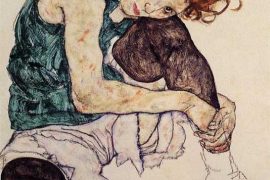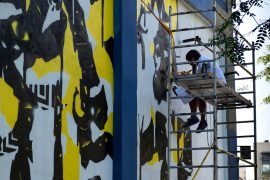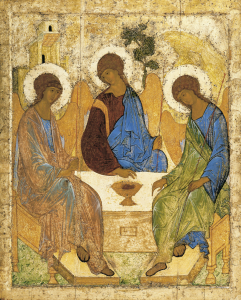[dropcap letter=”T”]
wenty years ago, at the Picasso Museum of Barcelona, the public was able to discover and admire the work of Egon Schiele, who during 2018 has toured the main art galleries of the world, still awakening a powerful and pertinent controversy. The work of the Austro-Hungarian artist, largely saved by Rudolph Leopold -collector and architect of the Viennese Museum Leopold, in which many of them are usually found- can disturb due to the explicit nature of the nudes, but above all because of its harshness. The exhibition is usually frontal, free of any story that might justify it or allow a contextualization. Here, in the absence of a narrative that makes even the intolerable understandable, would lay its artistic value, at least from the point of “negative aesthetics” approach, by Theodor W. Adorno.
 For the Frankfurt thinker -who mostly had in mind the trauma of Auschwitz, as the summit of the destruction of humanism values- the art that does not provoke discomfort, actually collaborates, consciously or not, with an authoritarian production system, which does not take into account the individual. Decades earlier, Schiele himself had inscribed in the margin of a watercolour, during a brief imprisonment that “repressing an artist is a crime, means killing life in gestation”. However, reconciling the freedom of artistic expression with the protection of civil rights, something that would seem simple, is not always so. That art has the power to question reality and confront the viewer with uncomfortable truths, with a tendency to be denied, is unquestionable. But does all art achieve that thaumaturgy, for the mere fact of being annoying? Who separates the art or the discourses that would allow to demolish prejudices and dogmas -in favour of the construction of an autonomous criterion- of those others that, on the contrary, corrupt or indoctrinate according to particular interests?
For the Frankfurt thinker -who mostly had in mind the trauma of Auschwitz, as the summit of the destruction of humanism values- the art that does not provoke discomfort, actually collaborates, consciously or not, with an authoritarian production system, which does not take into account the individual. Decades earlier, Schiele himself had inscribed in the margin of a watercolour, during a brief imprisonment that “repressing an artist is a crime, means killing life in gestation”. However, reconciling the freedom of artistic expression with the protection of civil rights, something that would seem simple, is not always so. That art has the power to question reality and confront the viewer with uncomfortable truths, with a tendency to be denied, is unquestionable. But does all art achieve that thaumaturgy, for the mere fact of being annoying? Who separates the art or the discourses that would allow to demolish prejudices and dogmas -in favour of the construction of an autonomous criterion- of those others that, on the contrary, corrupt or indoctrinate according to particular interests?
“Repressing an artist is a crime, it means killing life in gestation”, Schiele wrote during his stay in prison
Very open-minded cities, such as London or Berlin, avoided this complex dilemma by modifying the promotional posters of Schiele’s work. Initially, they showed naked men and women on a neutral background, with lost glances o grimaces. A white stripe went to cover the most sensitive parts of the bodies with a masterly slogan, inscribed as a justification: “Sorry, 100 years old but still too daring today”. A manoeuvre that, far from any improvisation, would seem part of a marketing strategy, who knows if carried out to attract even more public or encourage reflection. In the era of the digital baroque and the massive and interested reproducibility of the hoax -that has been called in a somewhat corny way the “post-truth”, with the predominance of fake news– this movement could have been perfectly designed. In any case, the campaign is excellent, because it recalls the transgressive essence of art -almost compulsory, since romanticism- without really transgressing, that is, making it attractive ergo consumable under the pretext of probable indigestion.
In many media that retraction was sold as a product of popular pressure -with different degrees of censorship, by the way, according to the city- against a work that, certainly, cannot meet everyone’s taste. An interesting article in The Guardian reflects, as a result of Schiele’s exhibition, about the display of contents for adults in the public space, bearing in mind that not only can it offend adults, but also underage people (who, having no guarantee of their capacity to process in a non-harmful way those contents, should be legitimately left out of the debate). Speaking of Schiele, perhaps this consideration seems very conservative and unnecessary, because he has become -despite his enfant terrible aspect- a benchmark of painting, just as Baudelaire is in the field of poetry.
The question of freedom of expression in art, however, is far from being solved, even among those who claim to be unconditional supporters. A few months ago, La Vanguardia posed the same question in referring the case of a contemporary sculptor whose work -inspired by the Greek figures, and installed on a promenade in Valencia- explicitly reproduces all kinds of sexual acts. Without entering into artistic evaluations -for which most of us, perhaps, are not qualified, not enjoying the comfortable historical perspective- what astonishes is that not only is there no mechanism of “promotion” enabling some critical reflection, but that it is taken for granted that maxim that Schiele -the freedom of artistic expression- fought so hard to defend. And not only that: it is deployed and made available thanks to public money. A “false transgression” that taxpayers would be entitled to question, since it somehow means a double moral jump, with a safe-net under.
EPIDERMAL EXHIBITIONS
Indeed, the attitude of those portrayed by Schiele may seem lascivious, a feature that is also present in many of his disturbing self-portraits. Not only has idealization become impossible: more than an empowerment of sensuality, in a morbid sense, a scandal of an opposite sign is perceived in his work: the apparent contempt for oneself, of any carnal reality -currently exposed- walks hand in hand with an explosion of creativity that manifests itself in the outline of the drawings, capturing impossible foreshortenings, and in the masterful palette of colours of his paintings, which reflect quartered landscapes, dancing defiantly over nothingness, in the absence of background. The layers are multiple, showing effects of glaze. They suggest a tendency towards abstraction, but -in the case of Schiele- without losing the figure completely, as if to reach the maximum psychological expression. Nature is brutally epidermic, implying that what lies below is, in effect, that which is shown.
The logic of the tattoo stops time and fixes an identity that wants to transcend. It arouses satisfaction and pride, insofar as it positions and allows recognition
It does not stop being symptomatic that that promotional slogan (“Sorry, 100 years old but still too daring today”) works as a claim, in a time like ours, in which the cult to the body is celebrated and eternal youth is postulated as a real possibility, that realizes oneself. There is nothing more illustrative of the search for a defining and massively accepted transgression -a mode of extreme differentiation- than the tattoo, inscribed in the most visible and superficial part; an organ -because skin it is so- that becomes maximally significant, wanting to represent something like a way of entering the interiority. The logic of the tattoo aims to stop time and establish an identity that wants to transcend and reach others. It gives satisfaction and pride, insofar as it positions the individual and allows recognition. A brand of exceptionality that is advertised more or less exclusively, depending on where it is located. The celebration of that unique reality, in the form of an exhibition, contrasts with its perverse usefulness in not so remote times.
The tattoo can also be understood as an ominous register, which culminates in the reification of the body, converted into cheap or free handwork. We are not thinking only of distant times, the ancient times or the era of discoveries and colonization, but during the twentieth century, in the cradle of modern civilization, in concentration camps where inmates were counted by means of a completely savage system. And there is even more. Those prisoners of the Buchenbald camp who had previously decorated their skin with tattoos, awaited a macabre fate: being collected and “studied” in a doctoral thesis. The conversion of the person into a thing, subjected to a subhuman life, has been remembered with great scandal by the artist Santiago Sierra (National Prize of Plastic Arts in 2010) in his series of “paid actions“. People who cannot refuse the acceptance of an economic exchange, because they are marginal, are portrayed in attitudes that the good conscience would find offensive. For example, letting a line be tattooed on your back, a work found at the Tate.
If it is true that the celebration of the body as a thing in Schiele’s work still scandalizes – beyond the marketing campaigns- it may well be due to that idea that we wanted to show in the first the post dedicated to the centenary of his birth. That is to say, the inextricable link eros / thanatos, which Schiele himself also explained in words. And not moved by the mere will to transgress but thinking in the embodiment of irrepressible principles and needs in the human being, all the more so in the artist, who behaves practically like a shaman, oblivious to the times and fashions: “Art it cannot be modern, art It is eternal”, he wrote.
Even if the material he uses for drawing is as simple and translucent as paper -skin coloured- the gravitation of his figures reveals an ontological weight of great beauty.
Making the beautiful form, that of the a priori sensual body, a memento mori -reminder of one’s death- is something that is not accustomed to achieving, with true radicalism, the most sinister tattoos, those with skulls, deadly animals or characters in ancestral languages that are exhibited as character traits, and that can mean anything, or even worse: nothing. Of course, more damaging -for oneself and for society- is to display a vital coherence with that extreme reification. The tattooed arm of the condemned Sean Penn in Dead Man Walking illustrates that tremendous emptiness, which seems fuelled by the dictum of Dostoyevsky’s character, who posited “If God does not exist, everything is allowed”. No lyricism is found in the sinister drive of a character of this type, unlike the not merely epidermal art of Egon Schiele, which confronts death with a creative attitude.
Even if the support he uses can be as simple and translucent as paper -skin coloured- the gravitation of his figures reveals an ontological weight of great beauty. In a letter that Egon Schiele addresses to Oskar Reichel in 1911, he explains in terms of illumination the meaning of his art. He does not avoid the messianic tone, nor the conception of his task as a loving act: “my being, my non-being, reoriented to permanent values, sooner or later has to transmit my strength to other beings more or less formed, as if It was a religion of believers. The most far away will observe, the distant ones will look at me and my deniers will live from my hypnosis. I’m so rich that I have to keep giving myself away”.


















